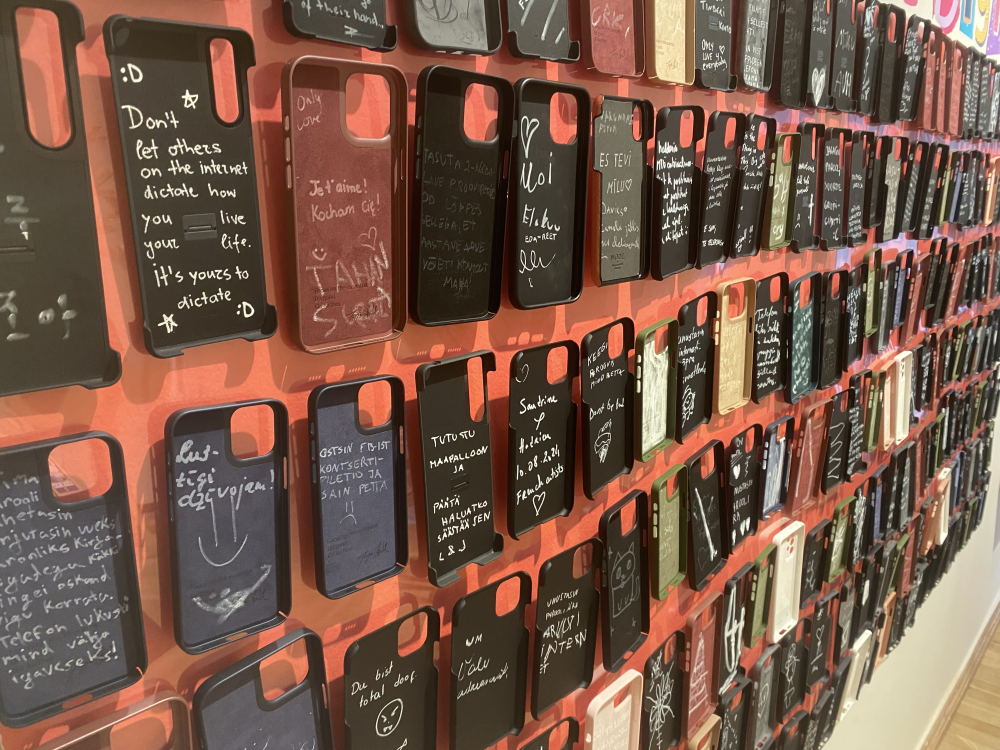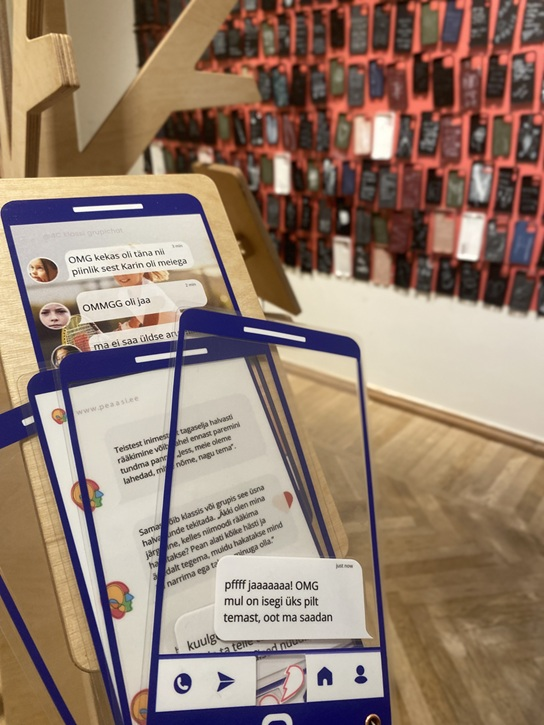In a modern world where the internet has become an integral part of our lives, the problem of cyberbullying is increasingly relevant. This form of violence can have devastating consequences for people of all ages, with children and young people being particularly vulnerable. However, initiatives exist to combat this phenomenon - one of which was an exhibition at Tartu Art Museum in Estonia. The exhibition offered a new approach to understanding and addressing cyberbullying through art and education, providing an excellent example of how such projects can help to tackle this global problem.
Stop bullying – Make the message safe! was more than just a display of artworks; it was an interactive space where visitors could immerse themselves in stories based on real-life cyberbullying incidents. The authors of the project aimed to create an exhibition that would be understandable and accessible to a wide audience, including children, teenagers, parents and teachers. It is important to note that the exhibition was focused on teaching media literacy, making it not only a cultural event but also an educational one.
The role of media literacy in fighting cyberbullying
One of the key elements of the exhibition was the use of diverse media formats. These interactive tools allowed visitors not only to follow the stories presented, but also to actively participate in the process of making sense of them. For example, some of the installations invited viewers to put themselves in the role of a victim or a witness of cyberbullying and try to find a solution.
Inger Klesment, one of Estonia's leading experts in media literacy education programs, a trainer and media literacy specialist, whose work focuses on children and adolescents, contributed to the creation of the exhibition. Her main focus is teaching critical thinking and safe behavior in digital spaces. According to Inger, media literacy is an essential tool for protecting children from cyberbullying: “Nowadays, media literacy is not just about knowing how to use a computer or a smartphone. It's about understanding the content and logic of the media. Knowing how to tell whether a person on social media is presenting their personal opinion or a fact”.
Children who learn safe online behaviors from an early age are more likely to avoid the negative consequences of cyberbullying. In this context, the exhibition served as an important educational platform where children and their parents could gain essential knowledge and skills.
 Photo: Ariadna Pavlenko / Tuleviku Meedia
Photo: Ariadna Pavlenko / Tuleviku Meedia
Stories based on real events
One of the exhibition’s strengths was that the stories presented were based on real-life incidents. These were not just fictional stories but actual cases of cyberbullying, documented and investigated by professionals.
One such example is the story of a teenager who was bullied on social media. Her photos were circulated online with offensive comments, leading to serious psychological problems. The art installation dedicated to this case illustrated not only the pain and despair of the victim but also the helplessness of those around her, who did not know how to react appropriately to such situations.
Another example was the story of a girl whose identity was stolen and used to create fake social media profiles. As a result, she became a target of ridicule and attacks from strangers. In the installation dedicated to this case, viewers witness how easy it is to fall into the trap of cyberbullying and how challenging it can be to cope with the consequences.
The exhibition Stop bullying – Make the Message safe! received positive feedback from visitors, as well as from education and psychology professionals. Inger Klesment believes that such initiatives will help raise awareness of cyberbullying among both children and adults: “Children, of course, understand what cyberbullying is, but unfortunately, they know it through their own experiences or those of their friends. We hope that with this exhibition, they will see other incidents unrelated to themselves, allowing them to discuss why someone bullies in this way and how to respond to the bully”.
 Photo: Ariadna Pavlenko / Tuleviku Meedia
Photo: Ariadna Pavlenko / Tuleviku Meedia
Arts, education and a safer digital space
The exhibition was also an important achievement, serving as a platform for sharing experiences and knowledge among teachers, parents and children. Many visitors took guided tours and asked questions to gain practical advice on how to protect themselves from cyberbullying. This will not only help improve media literacy but also build a community of people ready to support each other in difficult situations.
The success of the exhibition at the Tartu Art Museum demonstrates that art and education can be effective tools in addressing social problems. Inger Klesment is convinced that cyberbullying is a universal problem that exists in many countries. “The problem of cyberbullying is being tackled in all kinds of ways all over the world. For example, there is the Bullying Free School (KiVa) project – a science-based bullying prevention program initially developed in Finland".
The exhibition was not only an art event but also an important social project aimed at combating cyberbullying through art and education. Thanks to initiatives like this, society has the opportunity to better understand the problem and discover ways to address it. The work of Inger Klesment and her colleagues demonstrated that education and art can be powerful tools for creating a safer and more aware digital space where everyone is protected from aggression and violence.
Author: Ariadna Pavlenko, NPO Tuleviku Meedia
Background photo: Ariadna Pavlenko / Tuleviku Meedia
